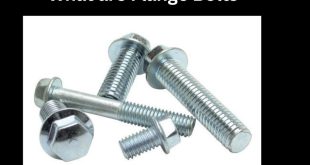Indoor air quality (IAQ) is a crucial aspect of our health and well-being. As we spend a significant amount of our time indoors—often more than outdoors—ensuring that the air we breathe is clean and free from pollutants is essential. One often-overlooked element that plays a vital role in IAQ is the ductwork of heating, ventilation, and air conditioning (HVAC) systems. Upgrading to new ducts can significantly enhance indoor air quality, and this article explores how and why.
Understanding Ducts and Their Role
Ducts are pathways that transport conditioned air throughout a building. They are part of the HVAC system, which controls heating, cooling, and ventilation. Ducts are designed to ensure that air circulates effectively within a space, maintaining comfortable temperatures and adequate ventilation.
Over time, existing ducts can become dirty, damaged, or inefficient. Dust, allergens, mold, and other pollutants can accumulate in old ducts, which can be circulated throughout your home when the HVAC system operates. This is where new ductwork can make a substantial difference.
The Impact of Old Ducts on Indoor Air Quality
Accumulation of Dust and Allergens
Old ducts often harbor dust, pollen, pet dander, and other allergens. When the HVAC system is running, these contaminants can be blown into the air, leading to increased allergy symptoms and respiratory issues. Studies have shown that poor indoor air quality can exacerbate conditions like asthma, bronchitis, and other respiratory ailments.
Mold Growth
Moisture can accumulate in old ducts, creating an environment conducive to mold growth. When mold spores are disturbed, they can be released into the air, posing serious health risks. Mold exposure can cause allergic reactions, respiratory problems, and other health issues, particularly in sensitive individuals.
Inefficiency and Air Leakage
Old or poorly designed ducts may have leaks or gaps that allow conditioned air to escape before it reaches its destination. This not only wastes energy but also causes the HVAC system to work harder, potentially leading to increased humidity and air stagnation. Stagnant air can worsen indoor air quality by allowing pollutants to accumulate.
Benefits of Installing New Ducts
Improved Airflow and Distribution
New ducts can enhance airflow and distribution throughout your home. Modern duct systems are designed to optimize airflow, ensuring that conditioned air reaches every corner of your space. This leads to a more consistent temperature and reduces the likelihood of air stagnation, promoting a healthier indoor environment.
Reduced Allergen Levels
By installing new ducts, you can minimize the accumulation of allergens and pollutants. New duct systems are typically equipped with better filtration options, which can capture smaller particles and allergens before they enter your living spaces. Additionally, clean ducts reduce the chances of old contaminants being reintroduced into the air.
Enhanced Mold Resistance
New ducts are often made from materials that resist mold growth. They may also be installed with better sealing techniques to minimize moisture accumulation. This can significantly decrease the likelihood of mold developing within your duct system, leading to a healthier indoor environment.
Energy Efficiency
New duct systems can improve the overall energy efficiency of your HVAC system. Properly sealed and insulated ducts prevent conditioned air from escaping, which reduces energy waste and lowers utility bills. This increased efficiency not only saves money but also contributes to a reduced carbon footprint, benefiting the environment.
Smart Technology Integration
Many new duct systems can integrate with smart technology, allowing for better monitoring and control of indoor air quality. Systems equipped with sensors can detect changes in air quality and adjust airflow and filtration accordingly. This level of control can help maintain optimal air quality continuously.
Factors to Consider When Installing New Ducts
While the benefits of installing new ducts are clear, there are several factors to consider during the process.
Professional Assessment
It’s essential to have a professional HVAC technician assess your current duct system before making any decisions. They can identify existing issues, recommend suitable solutions, and ensure that the new duct installation is done correctly.
Duct Design
The design of the duct system is crucial for maximizing airflow and efficiency. Considerations such as the size, shape, and layout of the ducts should be tailored to your home’s specific needs. A well-designed duct system will effectively distribute air while minimizing energy loss.
Material Choices
The materials used in new ducts can affect both air quality and energy efficiency. Options like metal ducts are durable and easy to clean, while flexible ducts can offer better installation options in tight spaces. Discuss material choices with your HVAC professional to determine what’s best for your home.
Regular Maintenance
New ducts require regular maintenance to ensure optimal performance. Routine inspections, cleaning, and filter replacements are vital to maintain air quality and efficiency. Setting up a maintenance schedule with your HVAC technician can help prolong the life of your duct system.
Conclusion
Investing in new ducts can significantly improve indoor air quality, enhancing the overall health and comfort of your living environment. By addressing issues like dust accumulation, mold growth, and energy inefficiency, new ductwork provides a path to cleaner, fresher air. Additionally, the integration of modern technology allows for better control over air quality, ensuring that you breathe easier in your home.
As we become more aware of the importance of indoor air quality, upgrading to new ducts should be considered a critical step in creating a healthier indoor environment. Prioritize your well-being and the well-being of your loved ones by exploring the benefits of new duct systems today.
 Daily Blogger News Stay updated with the latest trends and insights. Your reliable source for daily updates and information.
Daily Blogger News Stay updated with the latest trends and insights. Your reliable source for daily updates and information.







